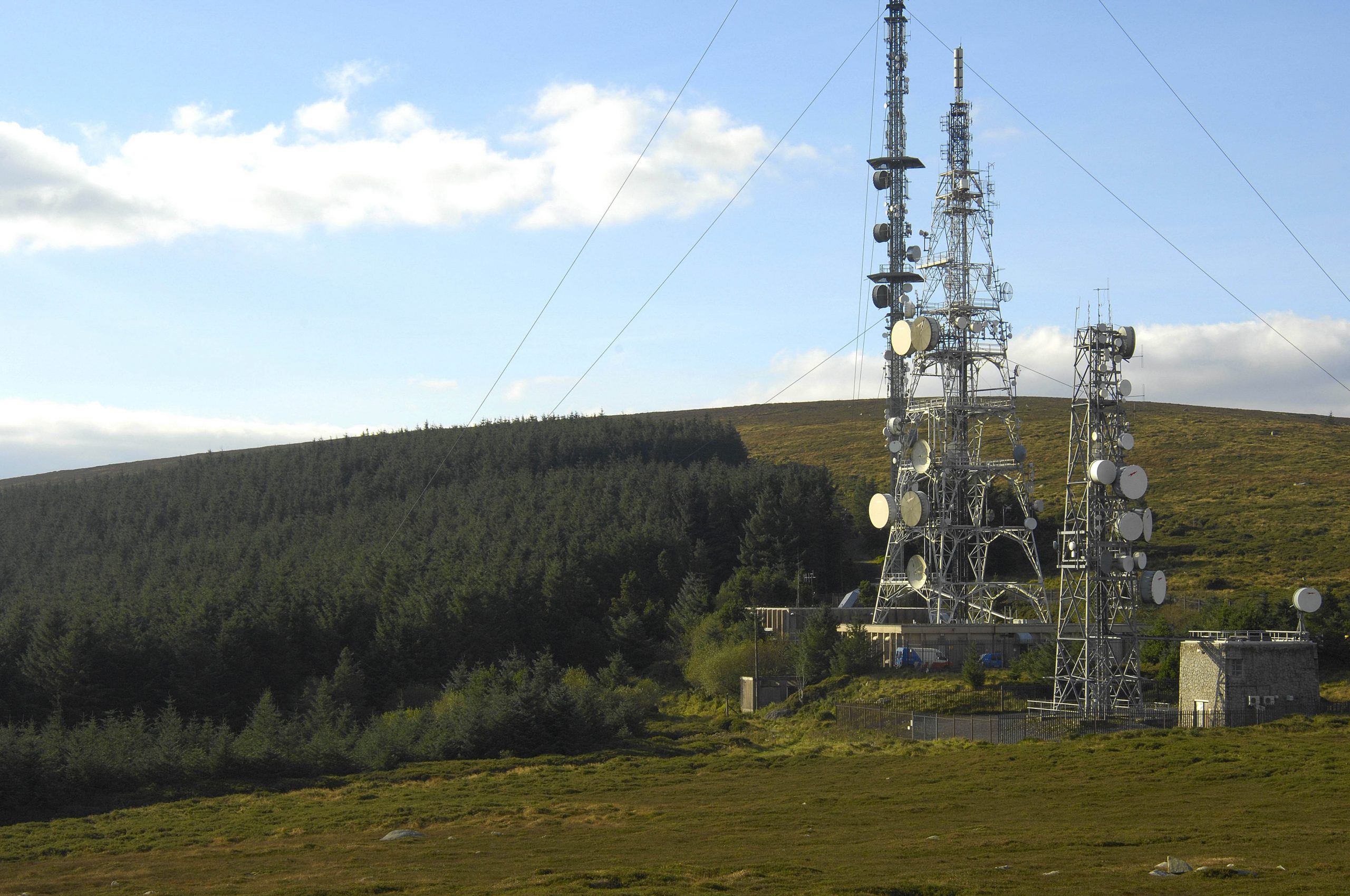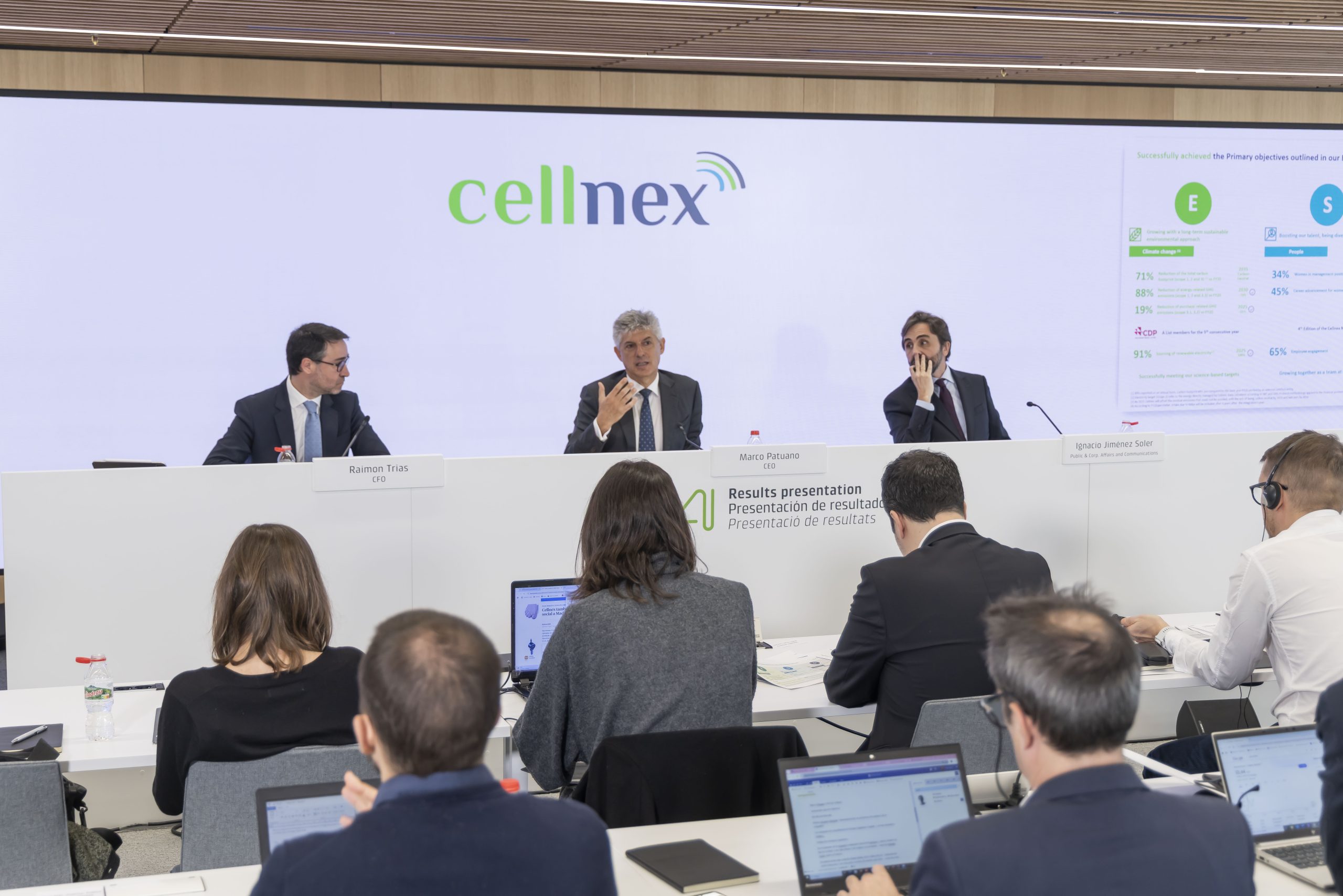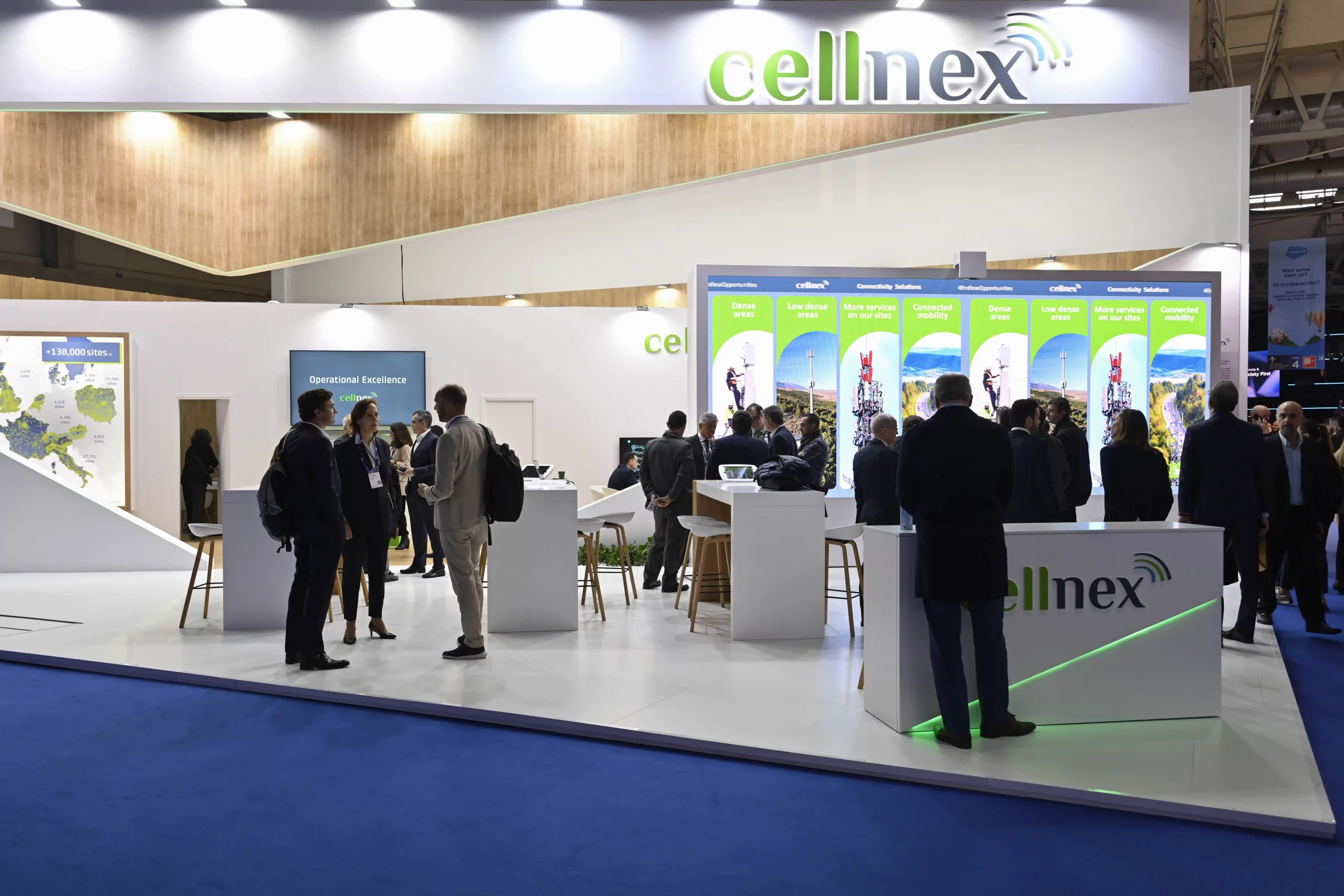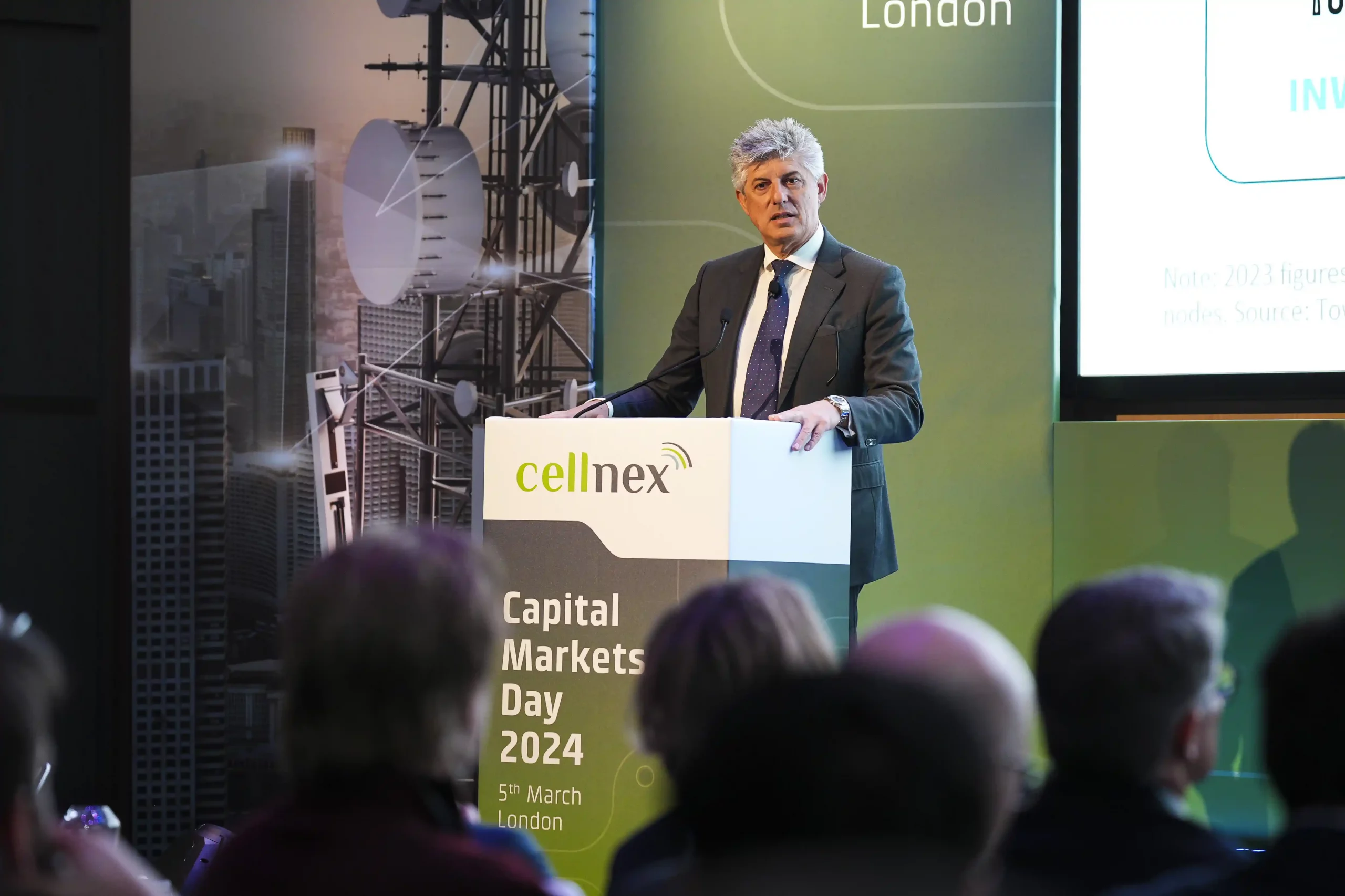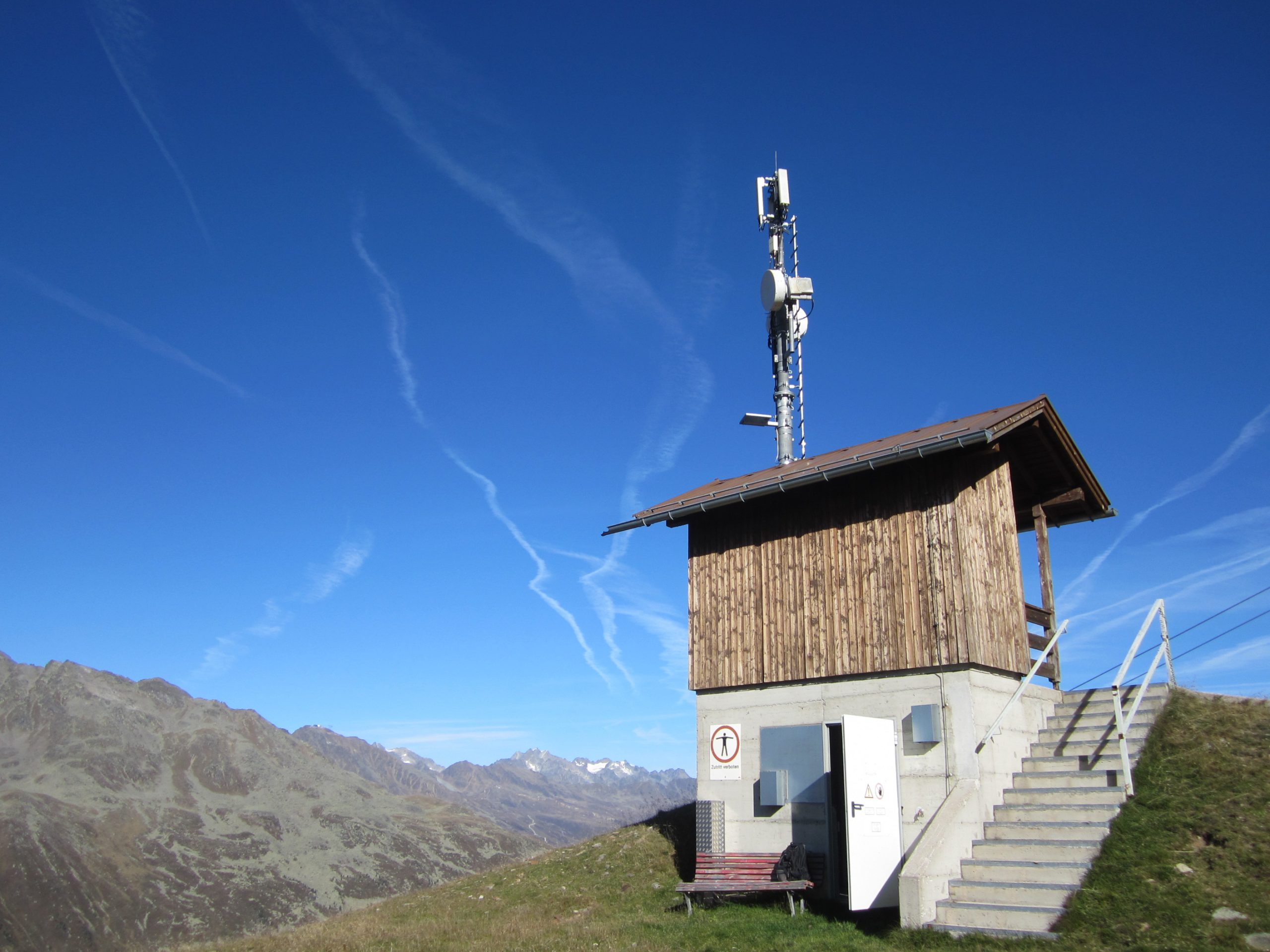Dla mediów

- 11 Feb 2019
- ·
- Technology
Cellnex Telecom to showcase its 5G infrastructure ecosystem at MWC19
BARCELONA MWC 2019
- Cellnex will present the latest developments 5G ecosystems, including the densification of networks using Distributed Antenna Systems (DAS) and Small Cells, and the “backhaul” of optical fibre towers and antennas.
- Intel, Cellnex, and Nearby Computing will jointly exhibit the latest edge-based technology based on demand-side computing at the very edge of networks.
- Cellnex will also present its latest 5G usage cases, one of wich is developing together with Mobile World Capital Barcelona as a part of the 5G Barcelona initiative.
- The Cellnex Telecom stand will be located at CS64-Congress Square, between pavilions 4 and 5.
Barcelona, 11 February 2019. Cellnex Telecom, Europe’s leading infrastructure operator for wireless telecommunication, will present its infrastructure ecosystem that will serve as the basis for rolling out 5G, at this year’s MWC19 (formerly Mobile World Congress), the world’s largest gathering for the mobile industry, which is taking place in Barcelona between 25-28 February 2019. Attendees will have the opportunity to explore a range of Cellnex’s 5G projects including its 5G Firefighting Drone Pilot Project -developed as a part of the 5G Barcelona initiative-, and its development of infrastructure for connected and autonomous vehicles.
Exclusively at MWC19, Cellnex, Intel and Nearby Computing, will also demonstrate the latest Edge technology which they are jointly developing. Edge computing is based on demand-adapted computing at the very edge of the network. “Adaptive Edge” is used to enable the possibility to detect in real time, adapt and locally focus the capacity of the network according to the point of highest demand for data consumption, ensuring the optimisation of the network resources and the minimum latency associated with 5G, especially for critical applications. Cellnex, Intel and Nearby Computing will showcase this technology across their interconnected stands, rolling out different scenarios for its implementation.
Cellnex in the development of the 5G ecosystem in Europe
5G will require a new network architecture, and Cellnex Telecom is developing the infrastructures required across all its six European markets for the effective roll-out of this new technology, in which the neutral host model and sharing schemes between operators will be key.
5G will involve a paradigm shift in terms of connectivity to facilitate the exponential increase in consumption and data transmission, as well as the minimum latency required for the development of applications such as the autonomous vehicle, artificial intelligence, industry 4.0 or telemedicine, among others.
Network densification
This new network architecture will require adapting the equipment installed in the existing infrastructures (macro sites) and increasing the densification of the network through Distributed Antenna Systems (DAS) and Small Cells in indoor areas (stadiums and sports venues, shopping centres, theatres, skyscrapers, carparks, underground networks, etc.) and outdoor areas (city centres, public transport networks, ports, airports, etc); especially high footfall areas.
Cellnex will present some of its latest projects in this field, the most noteworthy of which include the Gran Teatre del Liceu and the SABA and BAMSA car parks in Spain, as well as its joint work with Bouygues Telecom in France to place 5G equipment in Cellnex infrastructures providing service across the country for the operator.
Optical fibre
At Barcelona MWC19 Cellnex will also set out its proposals for the roll-out, operation and maintenance of fibre optic networks connected to towers and antennas (macros and “small cells”), which are key elements of the infrastructures required for the roll-out of 5G.
In July 2018 the company acquired Xarxa Oberta de Catalunya (XOC), which operates a neutral network of 3,000 kilometres of optical fibre and provides capabilities for developing the connectivity of its sites and those of its customers (backhaul & fronthaul networks).
Edge Computing
Cellnex is committed to extending “Edge computing” or data processing at the edge of the network, bringing computing capabilities closer to broadcast antennas and therefore closer to the receiver-users (people, vehicles, and machines). This approach helps achieve the requirements of 1-millisecond latency which will be demanded by critical applications such as the connected vehicle, or connectivity between machines, associated with 5G.
It is precisely in this area that Cellnex, Intel and Nearby Computing will be holding a joint demonstration at MWC19 of the latest Edge Computing technology. These three companies’ stands, which are interconnected, will house specific demonstrations of multiple usage cases of this technology in the field of mobility, security, industry 4.0 or entertainment; sectors and applications in which focusing and bringing computing capacity closer to the edge of the network and the subsequent immediacy in the transmission of data is critical and is a key factor of competitiveness in the industry.
5G USAGE CASES AT MWC19
Autonomous and sustainable mobility
Cellnex will also present its “Mobility Lab” which it is developing in the Parcmotor Castellolí-Barcelona car circuit. The company has equipped the circuit with the infrastructure and technology to enable various players and companies to work towards the mobility of the future. This includes advanced traffic solutions and the development of innovative products and services linked to smart mobility and the connected and autonomous vehicles. All of this is under the premise of efficient energy management, since all the infrastructure rolled out by Cellnex is self-supplied by wind and/or solar energy.
Parcmotor has become a benchmark in nd the innovative testing space for the sustainable development of ITS (Intelligent Transport Systems) associated to 5G technological solutions, particularly in the field of vehicle-to-vehicle (V2V) and vehicle-to-infrastructure (V2I) communications, which can subsequently be implemented in vehicles (future mobility), in towns and cities (smart cities) and on roads and motorways (smart roads).
Furthermore, the company is developing mobile connectivity solutions in urban environments – which are included in the V2X-Arch project – and underscore the importance of communications between vehicles and street fixtures (traffic lights) or communications between emergency vehicles and all other vehicles on a road and building these networks that make it possible to develop the connected vehicle.
5G Firefighting Drone Pilot Project
Along with Sitep, Masmóvil and 5G Barcelona, Cellnex will present its pilot programme titled “5G Firefighting Drone Project” which they are developing within the framework of the 5G Barcelona initiative. The initiative is promoted by the Catalan regional government (Generalitat de Catalunya), Barcelona City Council, Mobile World Capital Barcelona, the i2CAT Foundation, the Catalonia Technological Telecommunications Centre, Atos and the Polytechnic University of Barcelona (UPC) in an attempt to turn the city into a benchmark 5G digital hub.
The project uses 5G technology to facilitate and optimise management of fires by capturing, processing and transmitting data such as heat maps, geo-localised images and the location of teams, which are beamed to the emergency teams in real time using drones and a dedicated broadband network. The objective is threefold: to reduce response times, monitor the situation in real time and activate the appropriate and optimal resources to extinguish the fire.
IoT technology and connectivity
Cellnex has extensive experience in the development and application of IoT technology and connectivity.
It will present its IoT connectivity for social housing solutions at the MWC19 Barcelona. The company equips these homes with sensors that allow data – essentially concerning energy consumption and efficiency – to be gathered and monitored, and detecting temperatures and other indicators to make it easier to monitor these “connected” homes and to anticipate any anomalous or risk situations.
The company will also exhibit its tracking and geolocation solutions in the logistics field, which enables companies to monitor goods using sensors that send their location directly to the company’s IoT network, available nationwide.
Since 2015, Cellnex Telecom has the first Internet of Things (IoT)-oriented network, which provides service throughout Spain, covering 95% of the population. More than 2 million devices are already connected and use Cellnex’s IoT network in Spain on a daily basis, providing remote monitoring of electricity consumption, water telemetry, waste management or material tracking services, smart parking, security or energy efficiency and prevention of risks in social housing, among others.
About Cellnex Telecom
Cellnex Telecom is Europe’s leading operator of wireless telecommunications and broadcasting infrastructures with a total portfolio of 28,000 sites including forecast roll-outs up to 2022. Cellnex operates in Spain, Italy, Netherlands, France, Switzerland and the United Kingdom.
Cellnex’s business is structured in four major areas: telecommunication infrastructures services; audiovisual broadcasting networks; security and emergency service networks and solutions for smart urban infrastructure and services management (Smart cities and the Internet of Things (IoT)).
The company is listed on the continuous market of the Spanish stock exchange and is part of the selective IBEX 35 and EuroStoxx 600 indices. It is also part of the FTSE4GOOD and CDP (Carbon Disclosure Project) and “Standard Ethics” sustainability indexes.
Cellnex’s reference shareholders include ConnecT – whose shareholders are Edizione (60%), Adia (20%) and GIC (20%) – with a 29.9% stake in the share capital, as well as Threadneedle Asset Management, CriteriaCaixa and Blackrock, which hold minority interests.
















